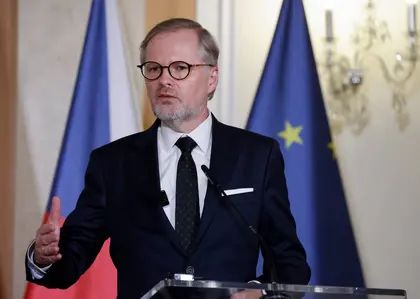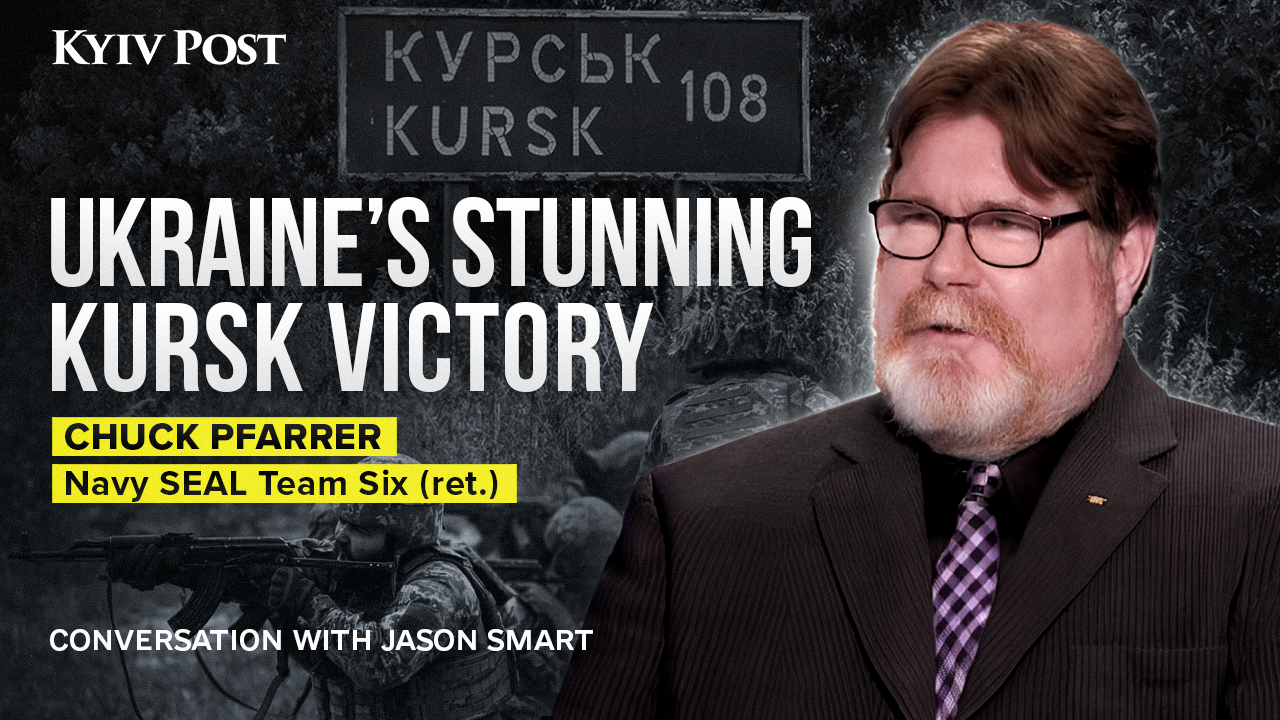Ten years ago, Kostiantyn Horbachov broke out of the Russian encirclement near Donetsk, losing his comrades and narrowly avoiding capture.
Horbachov is now a colonel and associate professor at the National Defense University. In the summer of 2014, he participated in the Ilovaisk operation as a major and one of the pioneers in developing unmanned systems.
JOIN US ON TELEGRAM
Follow our coverage of the war on the @Kyivpost_official.

Ukrainian volunteer battalions and the Army successfully fought pro-Russian separatists in the Donbas, who were commanded by disguised Russian officers.
Often, Russian army personnel were directly involved, though they removed their insignia.
Russia supplied the militants with weapons, including BUK anti-aircraft systems, one of which was used to shoot down Malaysian Airlines Flight MH17 on July 17, 2014.
Despite this support, Ukrainian forces were tightening the ring around Donetsk. Key battles in August centered on Ilovaisk, a critical railway junction near Donetsk, which, if captured, would severely weaken the separatists’ hold on the region.

Czechs Complete Pipeline to Replace Russian Oil Supply
By mid-August, it seemed inevitable that Ilovaisk would fall, prompting Russia to intervene directly with regular troops. They encircled Ukrainian forces, and despite promises of a safe passage, Russian troops fired on many who attempted to escape.
Ukraine lost nearly 400 soldiers who were killed or went missing, with more than 300 captured. Russia, on the other hand, suffered a few dozen fatalities and prisoners. More than 200 pro-Russian militants and several civilians also died. Over 400 Ukrainian soldiers, many of them wounded, managed to escape the encirclement. Kyiv Post speaks to one of them.
His account is a vivid recollection of one of the most dramatic and violent episodes to occur in the first year of the ongoing Russo-Ukrainian war.
How did you end up in Ilovaisk?
I was involved in the development of unmanned systems – we were among the first. I had to respond to calls. From the start of the anti-terrorist operation in 2014, the Russians began experimenting with unmanned systems. We had nothing at all back then. We started from scratch. Everyone interested in this field – modelers and hang gliders – gathered at the airfield in Yubileyny. Some had solid groundwork. We reviewed 20 models and selected a few. By Aug. 15, we were sent to Ilovaisk to conduct reconnaissance. I chose two of the best officers to join me – the ones who could effectively manage aerial reconnaissance. It wasn’t easy – we launched the drones by hand, and they landed like airplanes, right on the grass.
What were your first operations in Ilovaisk?
We identified enemy firing positions around the city. Among them were Russian mobile howitzers. The separatists also conducted reconnaissance – civilians on scooters, whom we couldn’t engage, recorded our movements. We tracked their gathering points and noticed that they always met at a certain house in the private sector. We started flying lower and lower, from 500 meters (1,640 feet) own to 100 meters (328 feet), and finally saw what was in the yard – a military KAMAZ (Russian brand of truck) and BRDM (a combat reconnaissance patrol vehicle), along with crates. It was their headquarters and reconnaissance hub. We called in artillery fire, and our gunners accurately targeted them with 152mm shells without damaging nearby homes. Around 30 personnel, including Russians and separatists, were neutralized. It was our first major success.
When did you realize that the regular Russian army had invaded Ukraine?
The next day, Aug. 23. While Kyiv was still in disbelief, we knew it for sure. Reports came in from officers in other sectors and locals fleeing westward. We were sent to Amvrosiivka, to the Prykarpattya Battalion, to conduct reconnaissance on advancing Russian convoys. When we arrived, we found an abandoned checkpoint and equipment – the Prykarpattya Battalion had deserted. We occupied the checkpoint ourselves. Meanwhile, Russian convoys were already entering Ukraine. There were at least three battalion tactical groups – an entire brigade. At first, we couldn’t see their equipment, only tracks on the ground. Then we realized they were hiding in forest belts, camouflaged with tree branches. It was very effective.
What kind of troops were they?
Paratroopers. By Aug. 24, we noticed the difference in their attacks. Earlier, mortar fire was sporadic, but now it was more precise – longer, coordinated, with sections and fire platoons changing positions. We continued our reconnaissance, coordinating with our artillery. However, on Aug. 26, our base station was destroyed by enemy fire. After that, we were assigned to protect Commander (Ruslan) Khomchak. We rotated shifts at headquarters every four hours.
How do you assess Khomchak’s leadership?
Honestly, without him, things would have been much worse. He coordinated efforts constantly, and barely slept. Khomchak made all the key decisions personally.
When did it become clear that the Russians were encircling Ilovaisk?
I don’t want to blame any one person. The situation was such that Kyiv didn’t believe the regular Russian army had crossed the border. By Aug. 24, we already understood that the forces entering were substantial and far outnumbered us. On Aug. 25, the first battles with Russian forces took place at Checkpoint 3906. We saw how one of their battalion groups had gotten lost and ended up heading straight toward our checkpoint in Ilovaisk. We had only one Rapira anti-tank gun and a small group of fighters. The commander reported that a Russian column was approaching, and all he had was this old World War II-era gun. Nevertheless, he fired, hitting two armored vehicles with his first shot. We captured a Russian T-72 tank and used it to smash their column. Two of our BMPs (infantry fighting vehicles) also engaged the Russians, resulting in a serious battle. That’s when we took our first prisoners – Russian paratroopers from Pskov.
How was the decision made to break out of the encirclement?
Once Ilovaisk was surrounded, Kyiv negotiated a “green corridor” with the Russians. But we didn’t trust it. Everyone knew that they hadn’t encircled us just to let us walk out. There wasn’t much military equipment, so we split into two columns and planned two breakout routes. The commander gave a clear order – we would leave armed, fighting our way out.
Who were the negotiations for the corridor conducted with?
With the Russian brigade that had us surrounded. They initially came to us, wanting to exchange one of their important wounded officers whom we had captured. We still had 12 of their soldiers, but they were only interested in this one officer. So negotiations began. The idea was to hand over their prisoners, and they would allow us to pass through their lines. But what we didn’t know was that there were actually two encirclements. They kept adding more conditions – change the time, disarm, leave our equipment. It became clear they were stalling.
How did you escape?
On Aug. 29, we set out. There wasn’t enough armor. The lead vehicles were armored, but behind them were buses, civilian cars – none of which could withstand much. We passed through the first encirclement, but the next column behind us ran into trouble at the same ring. On the second day, they started shooting at us heavily. My group was in two cars. Four of us – two in each car. The other car was hit, and both men inside were killed. The driver and I survived. We came under howitzer fire near the Horbatenko farm. The driver was wounded, so I bandaged his legs and applied tourniquets – there were no proper tourniquets, just straps. If I hadn’t helped him, we would’ve been doomed. Thankfully, he stayed conscious, even with two bullets in him, and managed to drive us out.

How did you get past the second ring?
We reached the Horbatenko farm and loaded the wounded into Commander Yuriy Bereza’s car. They left. I stayed. No one fully grasped the scale of the disaster because there was no communication. In Horbatenko, I met with fighters from the Myrotvorets Battalion, and we split into pairs. I left with one of them. We avoided the forest belts, where the Russians were patrolling, and spent two days walking through sunflower and corn fields. We walked at night and rested during the day, eating nothing but sunflower seeds. I still taste those seeds every summer... Finally, we saw the pipes of the Starobeshivska TPP (thermal power plant) and knew we were close. Crossing the Kalmius River was the sweetest moment, and the water was the best I’ve ever tasted. We were determined not to be captured and carried grenades with us just in case. But the important thing is that we made it out, armed and alive.
What happened next?
We were sent to join the column that was collecting the bodies of the dead. Seeing that huge column of vehicles filled with bodies showed me the true scale of the tragedy. Helicopters arrived, and one took us to a hospital in Dnipro. I’m still close friends with the guy I escaped with, even after 10 years.
You can also highlight the text and press Ctrl + Enter








